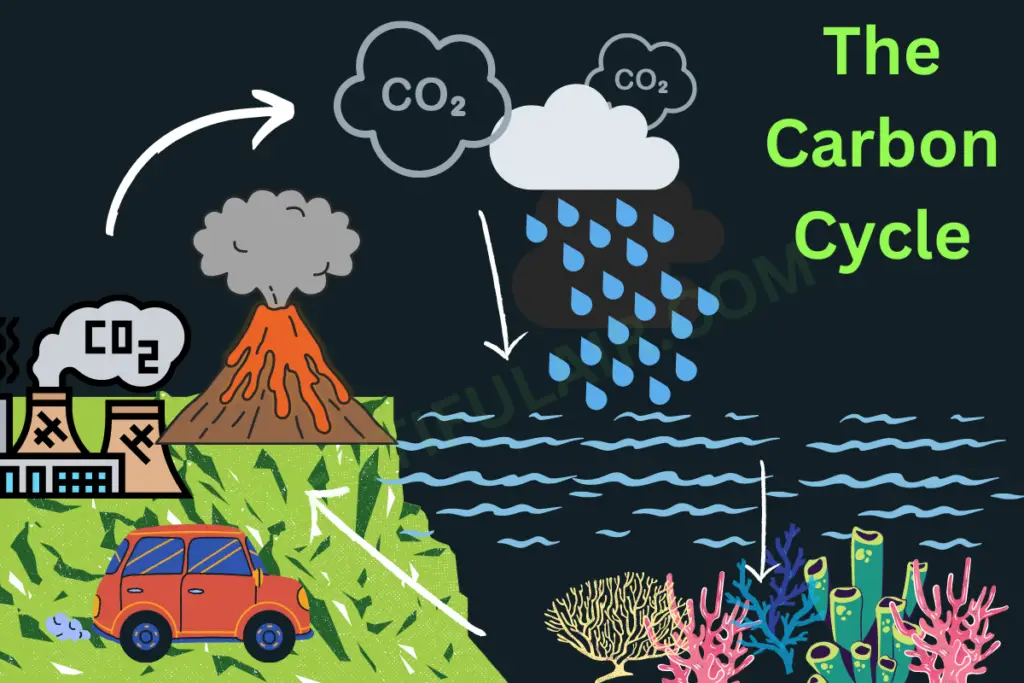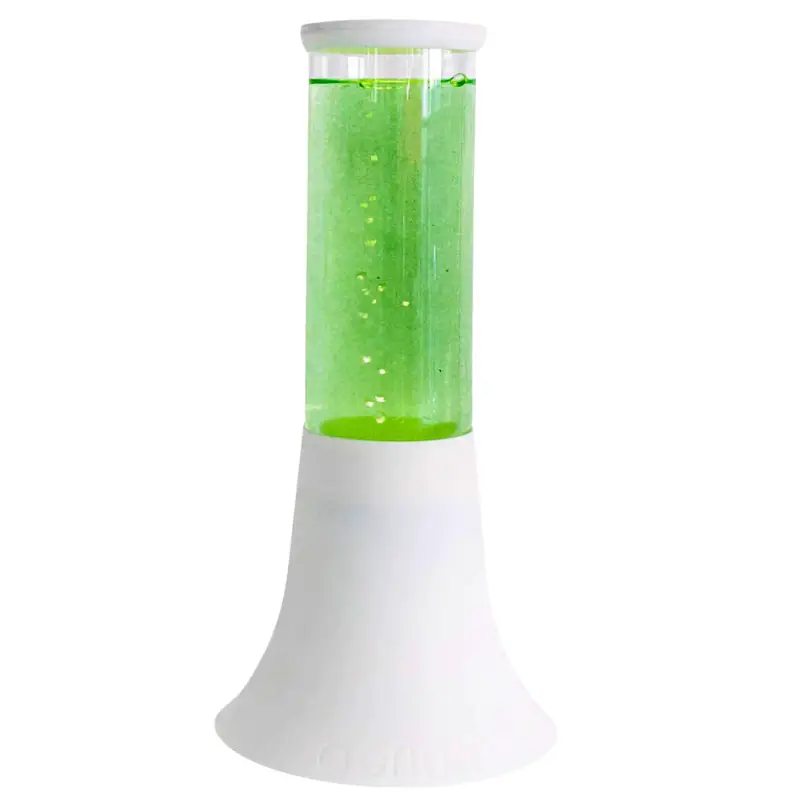Regular air purifiers cannot remove carbon dioxide from the air. However, one air purifier can remove carbon dioxide as it is made from algae and mimics how plants remove carbon dioxide from the air.
Carbon dioxide (CO2) is an important part of our planet’s atmosphere, playing a crucial role in the greenhouse effect. But high concentrations reduce the quality of our air, and can be harmful to humans.
In fact, humans exhale carbon dioxide after every breath, and are constantly around us. Researchers are currently testing solutions to reduce the levels of carbon dioxide in the atmosphere, and air purifiers are applying these tools to improve the air quality inside your home. Read on to learn more about the risks of increased carbon dioxide levels in your home and what you can do to keep them under control.
Sources of carbon dioxide in our air
Carbon dioxide (CO2) is a common gas in our atmosphere. It is made up of one carbon atom and two oxygen atoms, and it’s odorless, colorless and non-flammable.
Carbon dioxide forms from natural processes such as volcanic eruptions, bush fires, ocean release and plant decay, and it’s also a byproduct of animal and human respiration.
But while nature produces carbon dioxide, it also regulates its levels in the atmosphere with efficient natural processes like the carbon cycle (a natural exchange of CO2 across the Earth to keep it balanced).
On the other hand, anthropogenic (human) sources such as deforestation, industrial processes, coal power and fuel-burning cars produce even more carbon dioxide.

Did you also know that the bubbles in carbonated drinks and champagne are also caused by carbon dioxide? As well as the head in a glass of beer – the carbon dioxide is released from the yeast during fermentation.
We are constantly exposed to this gas.
Outdoor air that naturally enters a room has an average of 400 parts per million of carbon dioxide. As our bodies, our gas stoves, and our fireplaces release carbon dioxide, the amount of it increases indoors, especially when we close doors and windows in a crowded room.
At normal levels, carbon dioxide isn’t poisonous.
But it’s considered a simple asphyxiant, which means it interferes with our body’s regulation of breathing. It can reduce the amount of oxygen we absorb from each breath.
The levels needed for it to be hazardous are extremely high, and not likely to be found in a regular home. But at low to moderate levels, commonly found indoors, it can cause tiredness, drowsiness and even attention loss as it builds up.
Since carbon dioxide is odorless and causes no irritation, it is difficult for us to know when there is a high concentration around us.
One indication of carbon dioxide excess is that the air will feel stuffy. Prolonged exposure may cause headaches and troubled sleeping.
Thankfully, the consequences of low to moderate exposure to carbon dioxide are reversible when exposure ceases.
The best solutions to keep the indoor levels of carbon dioxide balanced are:
- To regularly exchange the air by opening doors and windows, especially in crowded rooms.
- Keeping proper ventilation in enclosed areas, in particular where there is combustion from gas stoves or fireplaces.
- Making sure that your HVAC system uses fresh air and isn’t constantly recycling the air from inside.
- Monitoring the air quality, keeping track of the levels of carbon dioxide as well as any VOCs, particulate matter and humidity.
The air purifier that removes carbon dioxide
Carbon dioxide molecules are very small.
Air purifiers are generally designed to stop bigger particles, like dust or pollen. Only specialized mechanisms like carbon activated filters or zeolite filters can trap carbon dioxide and other gasses, preventing them from ending up inside your lungs. Both filters work in similar ways, with porous surfaces that effectively adsorb the carbon dioxide to increase air quality in a confined room.
But these filters are proven to work only in ideal conditions (the proper air temperature and humidity), with extremely high concentrations of carbon dioxide (at levels that you’re unlikely to find inside your home).
Plus, their effectiveness decreases after a few uses. This means you are better off opening your windows to let in some fresh air than to use one of these filters. Airing out your home is always the best way to avoid any symptoms of exposure to increased carbon dioxide levels.
But when you need to close your windows and doors during the night, on very hot or cold days, or when there is smoke or pollen outside, there is another option to keep the carbon dioxide levels down.
Some plants are known to lower the amount of carbon dioxide inside your home.
Bird’s nest ferns, snake plants and succulents are great at absorbing carbon dioxide and maintaining your indoor air quality at healthy levels.
Researchers are currently studying the ability of algae to remove carbon dioxide from the atmosphere, which makes them a great ally in the climate crisis. At home, a natural air purifier that uses algae to clean the air is a good solution for increased carbon dioxide levels at home.
The Aerium

AlgenAir offers a natural air purifier that can remove carbon dioxide and produce oxygen as effectively as 25 house plants.
It also filters out allergens such as pollen, dust and bacteria. The system needs to be regularly maintained to keep the algae healthy.
Do Dyson air purifiers remove carbon dioxide (CO2)?
Dyson filters capture particles down to 0.3 microns in size, including common pollutants such as allergens, bacteria, viruses, pollen, and mold spores. Carbon dioxide molecules are about 0.00033 microns wide, which is significantly smaller.
While Dyson air purifiers are equipped with carbon activated filters, they cannot reduce the amount of carbon dioxide. Plus, some models convert other polluting gasses, like formaldehyde, into carbon dioxide, because it’s safer in comparison.
Will a carbon filter remove carbon dioxide (CO2)?
Carbon dioxide molecules are too small for a carbon filter to remove. Carbon filters have pores that can trap extreme levels of carbon dioxide, are found in industrial settings, not in a home.
Even then, the effectiveness is very limited, depending on the size of the filter and the conditions of the air, like humidity and temperature.
How can I remove carbon dioxide (CO2) from a room?
It’s not possible to remove carbon dioxide from a room, because it’s part of the atmosphere and we are constantly releasing more into the air after each breath. It’s also not necessary to worry about removing carbon dioxide completely, but it’s a good idea to monitor its levels to ensure they remain low and safe. Luckily, it’s not too hard to reduce the levels of carbon dioxide when they rise, and any symptoms from moderate carbon dioxide exposure are quickly reversible as soon as you take action.
The easiest and fastest way to lower the indoor levels of carbon dioxide is to pull in fresh air through an open door or window. Good ventilation is paramount to prevent excess carbon dioxide and other pollutants. Use the extractor fan when cooking, avoid smoking inside, and add some plants to maintain the air quality.
While Dyson air purifiers are equipped with carbon activated filters, these are not sufficient to reduce moderate levels of carbon dioxide. Plus, some models convert other polluting gasses, like formaldehyde, into carbon dioxide, because it’s safer in comparison.
In fact, carbon monoxide is considered a far more dangerous pollutant.
Plentiful Air has a complete guide to carbon monoxide and detectors available here.
Final words
In this article, we have learned about the risks of having too much carbon dioxide inside your home. We have also mentioned the reasons why you may have high concentrations of carbon dioxide indoors, the signs to look out for and the ways you can restore your air quality. In particular, we have explained the capacity of air purifiers in reducing CO2 levels and alternative solutions.
Crowded, confined spaces such as office meeting rooms and school classrooms are prone to developing high indoor CO2 levels. In a residential property, kitchens and bedrooms are at higher risk because there is generally combustion produced by cooking, fireplaces, smoke and candles, in combination with closed doors and windows.
In the outdoors, the carbon dioxide that results from respiration quickly disperses into the air. But in enclosed areas with poor ventilation, it remains and builds up. Some air purifiers can reduce hazardous levels of carbon dioxide from a room, but they don’t protect you from low levels which can still cause reduced brain function and productivity. That’s why pulling in some fresh air from outside is crucial to dilute any excess carbon dioxide, as well as keeping your HVAC system in good condition and using extractor fans when cooking or lighting up the fireplace. Installing a monitor to check the carbon dioxide levels in your home is a good idea.
References
https://www.kane.co.uk/knowledge-centre/
https://aggietranscript.ucdavis.edu/
